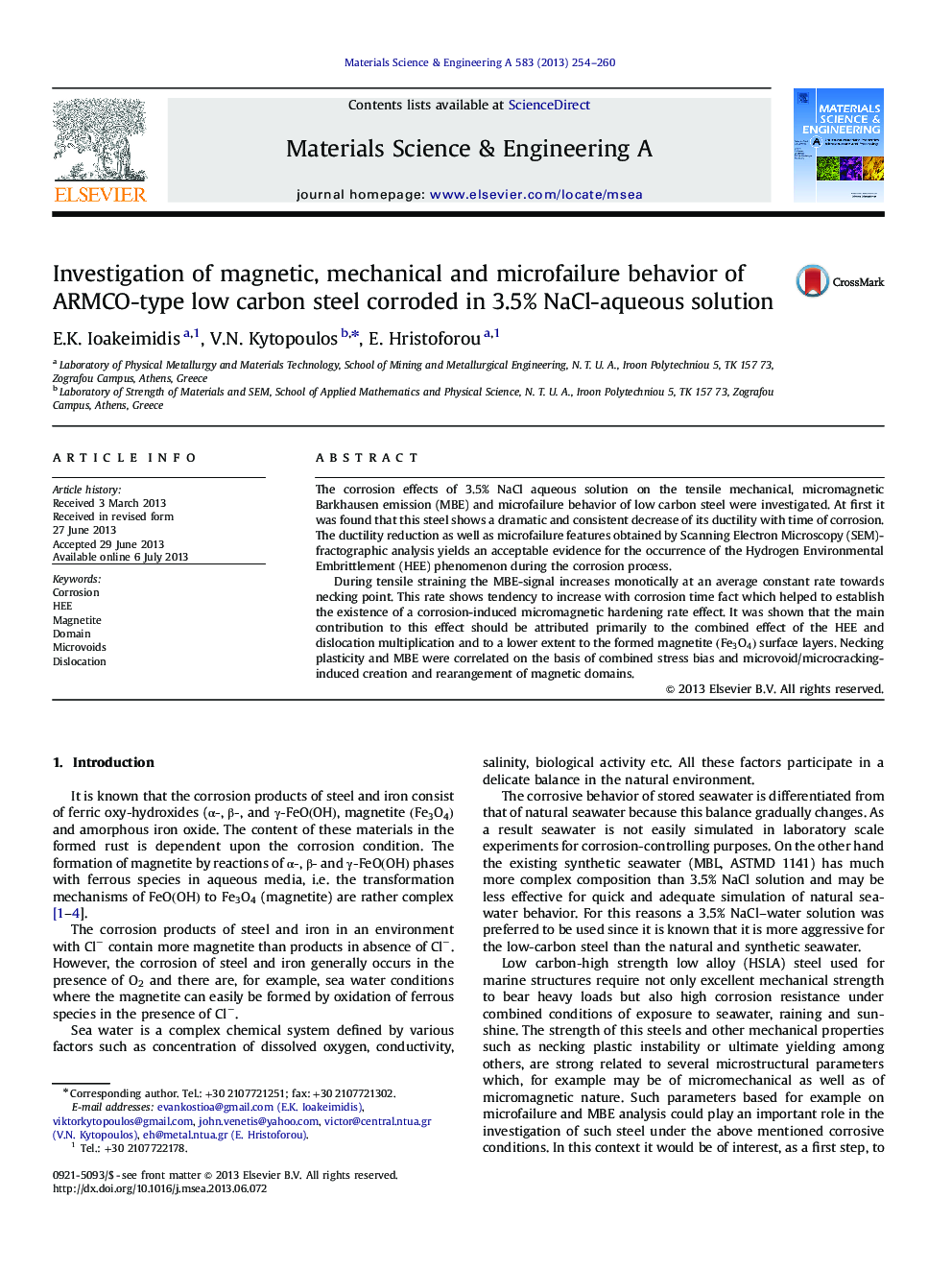| Article ID | Journal | Published Year | Pages | File Type |
|---|---|---|---|---|
| 1575816 | Materials Science and Engineering: A | 2013 | 7 Pages |
The corrosion effects of 3.5% NaCl aqueous solution on the tensile mechanical, micromagnetic Barkhausen emission (MBE) and microfailure behavior of low carbon steel were investigated. At first it was found that this steel shows a dramatic and consistent decrease of its ductility with time of corrosion. The ductility reduction as well as microfailure features obtained by Scanning Electron Microscopy (SEM)-fractographic analysis yields an acceptable evidence for the occurrence of the Hydrogen Environmental Embrittlement (HEE) phenomenon during the corrosion process.During tensile straining the MBE-signal increases monotically at an average constant rate towards necking point. This rate shows tendency to increase with corrosion time fact which helped to establish the existence of a corrosion-induced micromagnetic hardening rate effect. It was shown that the main contribution to this effect should be attributed primarily to the combined effect of the HEE and dislocation multiplication and to a lower extent to the formed magnetite (Fe3O4)(Fe3O4) surface layers. Necking plasticity and MBE were correlated on the basis of combined stress bias and microvoid/microcracking-induced creation and rearangement of magnetic domains.
